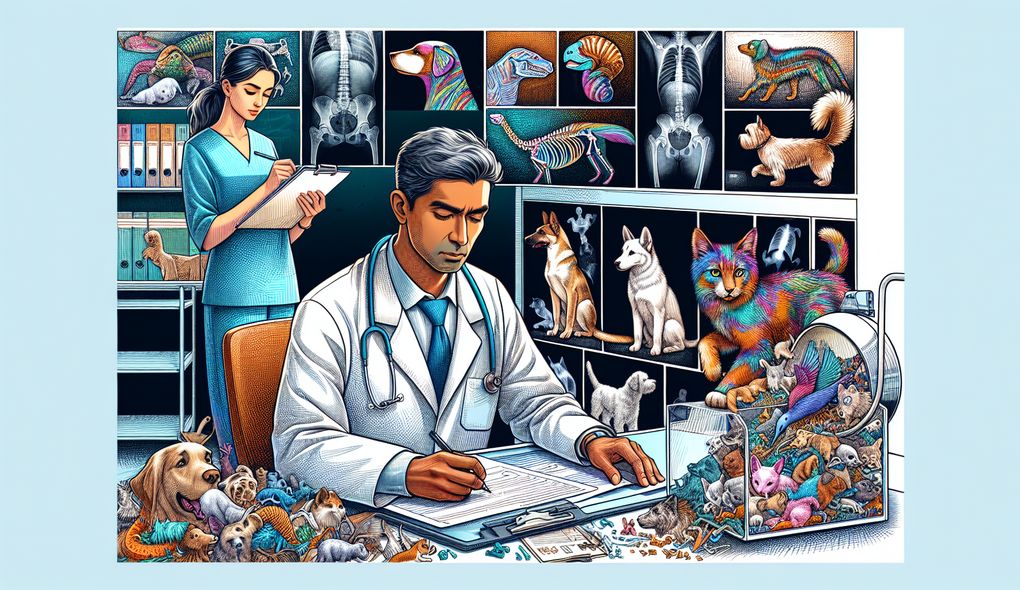How would you ensure the safety of animals during the imaging process?
SENIOR LEVEL

Sample answer to the question:
To ensure the safety of animals during the imaging process, I would follow strict protocols and guidelines. This includes properly restraining the animals to prevent any movement that could result in injury. I would also use appropriate sedation when necessary to keep the animals calm and relaxed during the procedure. Additionally, I would carefully position the animals to optimize the quality of the images while ensuring their comfort. Regular maintenance and calibration of the radiological equipment would be a priority to minimize the risk of any malfunctions that could harm the animals. Finally, I would communicate with the animals' owners and provide clear instructions on how to prepare the animals for the imaging process, including any specific dietary or medication requirements.
Here is a more solid answer:
To ensure the safety of animals during the imaging process, I would take several precautions. Firstly, I would carefully assess each animal's temperament to determine if sedation is necessary for their comfort and safety. I would work closely with the animal's veterinarian to select the appropriate sedation method and dosage. When positioning the animals, I would use foam padding and cushions to provide support and minimize any discomfort. I would also ensure that the imaging room is quiet and free from distractions, as noise can create stress for the animals. Regular maintenance and calibration of the radiological equipment would be carried out to guarantee its accurate functioning. Additionally, I would communicate with the animals' owners, providing them with thorough instructions on how to prepare the animals for the imaging process, including any necessary fasting or medication administration. Clear and compassionate communication is crucial to address any concerns or questions from the owners.
Why is this a more solid answer?
The solid answer expands on the basic answer by including specific details on assessing the animal's temperament and using appropriate sedation. It also mentions the use of foam padding and cushions for support, as well as emphasizing the importance of a quiet and distraction-free environment. The answer further highlights the need for regular maintenance and calibration of equipment and the significance of clear and compassionate communication with the owners.
An example of a exceptional answer:
Ensuring the safety of animals during the imaging process requires a comprehensive approach. Firstly, I would conduct a thorough pre-imaging evaluation, considering the animal's medical history, temperament, and any special needs. This assessment would inform the decision on the level of sedation required, if any, and the optimal positioning techniques to ensure the animal's comfort and minimize stress. During the imaging procedure, I would closely monitor the animal's vital signs, including heart rate and respiration, to promptly address any signs of distress. Additionally, I would maintain a sterile environment to prevent infections by following strict hygiene protocols. To guarantee the accuracy of the imaging results, I would regularly participate in professional development opportunities and engage in peer-reviewed literature. This continuous learning would allow me to stay updated with the latest advancements in equipment and imaging techniques. Moreover, I would take the time to educate the animal's owners about the imaging process, addressing any concerns they may have and providing them with detailed post-imaging instructions. Overall, my primary focus would always be on the animal's welfare, ensuring their safety and comfort throughout the imaging process.
Why is this an exceptional answer?
The exceptional answer provides a comprehensive and detailed approach to ensuring animal safety during the imaging process. It includes a thorough pre-imaging evaluation, monitoring vital signs, and maintaining a sterile environment. The answer also emphasizes continuous learning to stay updated with advancements in the field and prioritizes educating the animal's owners. These additional aspects showcase a deep commitment to animal welfare and a comprehensive understanding of the responsibilities of a veterinary radiologist.
How to prepare for this question:
- Familiarize yourself with different sedation methods and their appropriate dosages for different animal species.
- Research and practice optimal positioning techniques to ensure the animal's comfort and minimize stress during the imaging process.
- Stay updated with the latest advancements in radiological equipment and imaging software.
- Develop effective communication skills to educate and address concerns from animal owners.
What are interviewers evaluating with this question?
- Animal safety
- Technical skills
- Communication skills

